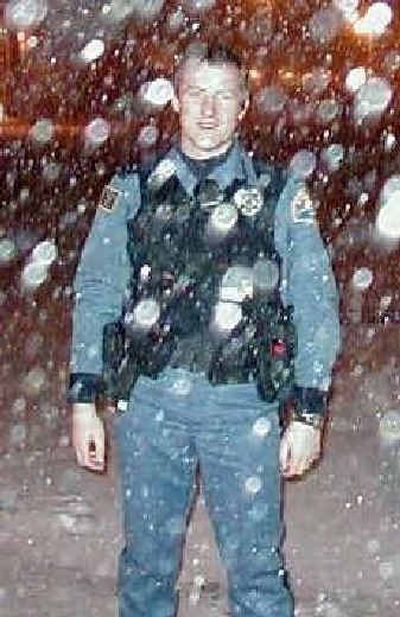Police officer has a truly chilling beat

Cold? You call this cold?
Only if you’re listening to our easily excitable TV weathercasters. You’d think we have entered the next Ice Age the way these alarmists have gushed over the recent frigidity to hit the area.
Sorry. But this ain’t cold.
This is just winter in Spokane.
Today we’re going to learn what cold really is, thanks to a police officer named Rich Holschen.
I called Holschen the other day thanks to reader Tracey Hirt. She gave me a heads-up on how the former Spokane resident has become an expert on life in a deep, dark freeze.
It was pure luck that Holschen answered the phone. He spent most of last week dealing with the aftermath of the worst blizzard to smack Kaktovik, Alaska, in decades.
Kaktovik is an Inupiat Eskimo village of 300 on Barter Island. It’s located on the Arctic Ocean, between Prudhoe Bay and Canada.
Bring a flashlight. About four hours of midday gloom is the only sun Kaktovik sees this time of year.
This sliver of land – 250 miles north of the Arctic Circle – is home to Rich and Tamara Holschen and their five children.
The blizzard that began Jan. 8 was so bad it put Kaktovik in the national news, which doesn’t happen very often.
Fierce winds knocked out the power generator. Temperatures, with the wind factored in, plunged to minus 40.
Many of Kaktovik’s weather-hardened residents sought shelter in public buildings that had their own power plants.
Holschen, 32, has experienced plenty of subzero nastiness during three years in Kaktovik, but nothing quite like this. In the 10 seconds it took to take off a glove and reach for his keys, four of his fingers were frost-nipped.
“You can’t breathe,” says Holschen of what it felt like to be outside.
Holschen opened his front door after the storm to find a full-length mirror imprint of the door. It was formed by a thin crust of snow that was molded into the door’s shape by wind pressure. The officer snapped a photograph of the odd sight, which was published in the Anchorage Daily News.
Holschen met Tamara when she was attending college in Spokane. They fell in love and married in 1997. The couple eventually moved to Tamara’s home state, and his law enforcement education landed him a job with Alaska’s North Slope Borough Police Department.
That’s how Holschen got assigned to Kaktovik.
“The first two months when I came up here it didn’t warm up above 40 below.”
This was just an introduction. Holschen has seen the temperature plummet to a wind-chilled minus 120.
What made this recent blizzard so different were high winds from the west. Storms with westerly winds cause more problems, he says.
Aside from typical police work, Holschen has one duty most lawmen will never encounter. During whaling season in September and October, it’s up to Officer Holschen to chase away the scores of polar bears who paddle over from the mainland looking for meat scraps. “They’ll usually wander away if I make enough noise,” he says.
The Eskimos, says Holschen, “still live a subsistence lifestyle, hunting for most of their food.”
Along those lines, Holschen has eaten frozen whale blubber and skin called muktuk. However, Holschen has yet to summon the nerve to try a variation where the muktuk is fermented three weeks in seal oil and whale blood. “I’m told it’s delicious,” he adds, “but I’ll take their word for it.”
Despite the continual nightlife, Kaktovik doesn’t offer many entertainment options. You must make your own fun.
So the Holschen family has embarked on an entrepreneurial adventure. They make a caffeinated form of lip balm Holschen calls “Spazzstick,” available via the Internet. Perhaps the Holschens will make enough money to one day move to a beach house closer to the equator.
For the time being, however, you can find them shivering in cold, cold Kaktovik.
“I’d love to bring ‘Fear Factor’ up here,” says Holschen. “I’d definitely put their pretty people through some interesting stunts.”